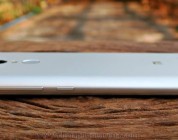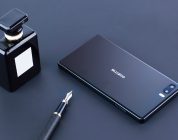The promise of OnePlus is to provide users with a flagship option that isn’t going to cost them $700-1000. You can have the top-tier Snapdragon, OLED, big RAM and storage, and sleek, slim flagship style for hundreds less with OnePlus 6.
OnePlus 6 vs Lenovo P2
I’ve been using the OnePlus 6 for a while now and I’m almost ready to make the switch from Lenovo P2.
If you’re thinking that’s a lame OnePlus 6 endorsement let me tell you the Lenovo P2 is an incredible phone for the price. Not just great, but incredible: The amount of value this phone brought to the table is unparalleled. Nothing else even comes close.
The Lenovo P2 OLED is subjectively not far off from the OnePlus 6. Both are 1080P, and the OnePlus 6 display appears to be slightly richer, a bit sharper, and the IPS rainbow effect at extreme angles (functionally irrelevant) appears a bit sooner on Lenovo P2 than OnePlus 6.
Camerawise the Lenovo P2 sits at least two levels back. The Lenovo P2 puts out very nice photos in good light, but falters when indoors and with low light images, while the OnePlus 6 does great. Additionally, the OnePlus 6 bokeh/portrait mode is on par with top flagships.
The Lenovo P2 carries Snapdragon 625 which is an excellent mid-range SoC for major brand mobiles and is still being released in models today, more often than not at significantly higher prices than what Lenovo P2 was released at in 2017. Powerwise the OnePlus 6 blows Lenovo P2 away, but I also believe that Snapdragon 625 should be more than enough for the average user. The incredible quickness of the OnePlus 6 is hard to ignore though. Everything on OP6 is just massively snappy and that feels great.
This SoC is very efficient and SoC efficiency is doubly important due to the huge battery in P2, which is the main difficulty in deciding to switch over to OnePlus 6. Importantly though, this is par for the course — all of these thin flagships have relatively small batteries compared to Lenovo P2 and other big battery China phones.
To top things off, frequency support is great on OP6 in comparison to the Lenovo P2.
OnePlus 6 frequency support
OnePlus 6 is very smart regarding frequency support; knowing they are marketed towards a global audience, in an excellent move, all versions of the OnePlus 6 include Global LTE (4G) and WCDMA (3G) bands. This includes N/C/S American bands.
- GSM 2G: 850 / 900 / 1800 / 1900MHz, CDMA: BC0 / BC1
- WCDMA 3G: B1 / 2 / 4 / 5 / 8 / 9 / 19, TD-SCDMA: B34 / 39
- FDD-LTE 4G: B1 / 2 / 3 / 4 / 5 / 7 / 8 / 12 / 17 / 18 / 19 / 20 / 25 / 26 / 28 / 29 / 66 + TD-LTE: 34 / 38 / 39 / 40 / 41
OnePlus 6 review OS
OnePlus 6 runs on Android 8.1 overlaid with OxygenOS. OnePlus is damn smart with Oxygen, as stock vanilla Android users will feel right at home visually and functionally, yet Oxygen provides enough minor changes to make OnePlus owners feel they’ve got something unique. Very well thought out and perfectly executed, this is how to do it.
Performance wise OnePlus 6 is as good as it gets. System animations and transitions are flawlessly quick and smooth, switching between apps in memory is rapid and smooth, loading apps not yet in memory is quick, and there were no force closes or app conflicts during testing.
iPhone X ushered in an excellent new fad and I can’t praise it enough — navigation gestures instead of onscreen buttons. It’s fantastically intuitive and simple, and gives you an extra 10% real estate, which gives these 18:9 / 21:9 displays even more value. Yes, on phones without navigation gestures you can hide the navigation buttons but this requires an extra swipe to bring them back up. OnePlus 5T has system-integrated navigation gestures, and OnePlus 6 joins the parade. It truly is an evolutionary change in Android. Swipe Up from the center to go Home, Swipe Up and Hold for Recent Apps, and swipe up from the left or right side for Back. Excellent, and once you get used to it you’ll never want to return to onscreen buttons.
Several OTA updates have come through which downloded and installed without issue.
OnePlus 6 review style
For a long while, very plasticy backs were the only choice we had. Then came matte CNC-machined metal which improved the looks of phones considerably. After metal, there was glass. And, after glass we went back to plastic, but not typical plastic, plastic which reflected light in brilliant ways.
And now, bead-blasted glass — unlike anything else before it, at first glance midnight black appears to be matte plastic, but it reflects light differently and feels/looks much more premium. Hedging their bets, OnePlus 6 has also released a shiny version, another ingenious decision by OnePlus which allows them to pull in users who prefer matte and users who prefer shiny.
With the Midnight Black version, the back does an excellent job of resisting fingerprints.
OnePlus 6 display
For the front we have a 6.3″ 19:9 Samsung AMOLED display. This display is 2280×1080, which gives us 402 pixels per inch (PPI). The OnePlus 6 display covers 84% of the front of the phone. While some may lament the lack of a higher resolution display, users with 20/20 vision will not be able to see pixelation at 12″ or further viewing distance.
In terms of quality, the OnePlus 6 display is excellent. Brightness is uniform across the display and there’s no noticeable changes in brightness or color when viewed from typical viewing angles. At extreme angles there is some minor rainbow effect, but we are talking about angles you will never use your phone at.
Brightness is excellent, coming in at *** lux, which makes it viewable in direct sunlight. There is also a brightness boost mode which kicks in in direct sunlight to further improve viewing.
The default display mode gives us the typical OLED experience. Bright, vibrant colors with very respectable whites and as usual with OLED, true black. There are several other profiles: sRGB, DCI-P3, and Adaptive. If you prefer a more laid back IPS LCDish color space where the colors are more realistic and not so vibrant, the sRGB profile is the way to go. There is also the option to adjust white balance to your preference.
For nighttime there is a toggle which warms the display and makes it easier on the eyes. The aggressiveness of night mode can be adjusted in settings.
Overall it’s an excellent display. Additionally, OnePlus 6 supports YouTube HDR and has received Widevine L1 certification (Google’s DRM management) which means Netflix will allow HD content. Without Widevine L1 certification, Netflix limits you to to 480P).
OnePlus 6 camera sample images
Undoubtedly, when spending this much money, the most critiqued component is a phone’s camera. And rightfully so, as nowadays $200 phones run Android quite well and should satisfy the majority of users power-wise. To separate themselves from the pack, the high-dollar phones need to come with top-of-the-line cameras.
In this the OnePlus 6 does not disappoint. While close inspection of OnePlus 6 images reveals artifacting and strong sharpening, images at normal viewing sizes look excellent. Color is very good without going into over-saturated territory. Corners are decent, not the sharpest I’ve seen, but nothing that users will notice unless viewing extremely cropped/zoomed. It’s a simple matter for manufacturers to auto-crop out corners, but that’s not what we want, as we lose imaging area when this is done. The focal length on the OnePlus 6 main camera is 25mm, which is just a fraction narrower than the typically used 24mm on expensive standalone enthusiast cameras.
Unlike the OnePlus 5, the OnePlus 6 comes with optical image stabilization (OIS). OIS is hardware stabilization, which helps to compensate for handshake in video and with slow shutterspeed photography.
Generally speaking, without OIS we can take sharp images as slow as about 1/20s at best. With the OnePlus 6 I was able to fairly consistently get handheld tack-sharp images as slow as 1/3s. This is outstanding.
Focus time and accuracy are very good. Even in very dim lighting, 5 lux where the objects were tested, OnePlus 6 performed well. There was occasional focus-hunting which may be due to the tap-point in the scene not entirely fitting in the OnePlus 6’s focus target (I was testing with small objects up close). Note that 5lux is dimmer than most will shoot in; anything brighter gives better results.
Again, not to hype up OnePlus 6, quick and accurate focus should be par for the course for any decent phone.
OnePlus 6 secondary sensor – IMX376k review
The secondary camera sensor, Sony IMX376k, is a 1/2.8″ type 20MP sensor. This is smaller than the main sensor, but not by much.
In contrast to what some other reviewers have stated, I have found that the secondary camera does indeed come into play to help flesh out detail, at least in the low-light testing I’ve done. In addition to helping with low-light, the secondary camera is used for depth calculation when doing bokeh/portrait shots. See the samples below of 100% crops in low-light with the secondary camera covered, and with the secondary camera uncovered.
OnePlus 6 components
- GPS — Excellent. Locks quickly and stays connected to 30 satellites at any given time
- Compass — Working without issue
- Accelerometer — Working without issue
- Linear acceleration — Working without issue
- Ambient light sensor — Working without issue
- WiFi — Excellent. Easily reaches 44m (144ft) maintaining fast and stable connection
- OTG — Working without issue
- External speaker — Very good. Beyond adequate loudness and clarity
- Fingerprint sensor — Exceptional. It doesn’t get any quicker than this
OnePlus 6 screenon battery life and charging
The charger for the OnePlus 6 supports 5V 4A charging which gives us 20W charging. The OnePlus 6 steadily charges to 100% in one hour.
Battery life is very good and as expected with Snapdragon 845, giving us *** hours on out 720P WiFi YouTube test. This should give the average user about five hours screenon time through 24 hours. Take a look at the various battery life screenshots and you will I was regularly achieving significantly more than 5 hours screenon, though note that these results are with WiFi, not a SIM data connection.
OnePlus 6 conclusion
There are a few things missing I would have liked to have seen on OnePlus 6 — manual video, dual/stereo external speakers, and wireless charging, but for myself these aren’t deal breakers and we may yet see manual video added in an update.
OnePlus 6 gives us an excellent OLED display, modern flagship style, Snapdragon 845 power, top OS responsiveness, outstanding WiFi and GPS, excellent charging, and a very good camera at hundreds less than flagship competition. If you’re craving full SoC power and responsiveness, with a beautiful OLED display and the next step up from mid-range phones in camera quality, the OnePlus 6 comes highly recommended.







